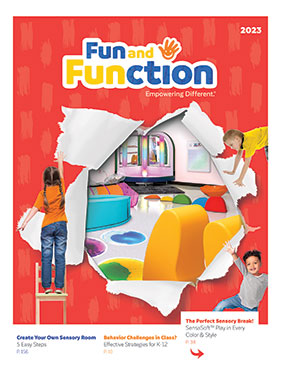Evidence is clear.
Activity breeds wellness….in everyone. For children with autism fitness can be more than just a healthy boost. It can act as a filter toward intruding sensory information. Movement alone can be helpful to minimize hand flapping, stuttering, lack of attention, poor eye contact. Why? All those endorphins, increase blood circulation and better oxygen intake help to regulate the sensory system. Movement, heavy work and aerobics can do wonders for children on the autism spectrum as well as those with sensory processing disorders. Lets look at these forms of exercise and how to maximize their benefits toward children with special needs.
Movement:
This can be as gentle as stretching, taking a walk, go on a hike, or using a wiggle cushion or balance board. The idea here is to get off your bottom, put down the electronics and get moving. For children on the spectrum, supervision is highly recommended, as their perceptual skills can be somewhat amiss. So for safety reasons, keep your eye on your athlete as he goes for a stroll or begins to test his balance. Studies have shown that coordinated movement (Simon Says, hand-eye coordination games, etc.) can really impact focus and attention after as little as 2-3 minutes.Heavy Work:
We recommend weights or machines (with supervision) for older kids, but younger kids can push a wheelbarrow, take out the garbage, vacuum, help move furniture, rake leaves, shovel snow, sweep the deck, stack chairs, carry books, etc. Not only are they getting great proprioception to their muscles but also they are "helping out. " For kids who love serious heavy work, try rock climbing as a sport. Classes are available at most centers.Aerobics:
This is where the focus is oxygen uptake and the rewards can be tremendous. Try biking, skateboarding, rock climbing, running, swimming, snow skiing and trampolining. These activities can have a lifetime positive effect on the heart lungs, legs, arms, trunk and mood! Many centers have teams you can join but you can also do many of these as a family.For children with special needs keep in mind:
- Acquiring new skills may require a longer learning curve.
- Repetition is key and setting them up for success at each stage is crucial.
- Break the task down into very small components and reward even the smallest of achievements.
- Make movement fun.
- Set an example! Get moving yourself





















Comments